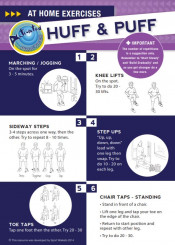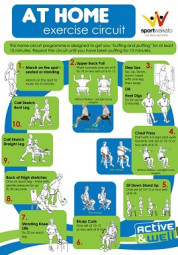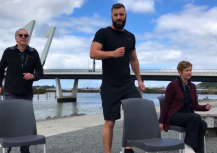Evidence suggests that physical activity is important in preventing or delaying long-term conditions,4 especially:
- cardiovascular diseases such as hypertension, coronary heart disease, heart failure, intermittent claudication and strokes
- pulmonary diseases such as COPD, asthma, cystic fibrosis
- some cancers
- musculoskeletal disorders such as osteoarthritis, osteoporosis, back pain and rheumatoid arthritis
- falls in older people
- metabolic diseases such as obesity, hyperlipidaemia, type 2 and type 1 diabetes
- mental health conditions such as depression, anxiety, stress and schizophrenia
- polycystic ovarian syndrome
- neurological disorders such as dementia, Parkinson's disease and multiple sclerosis.5
Physical activity and exercise help medical management of the condition, provide social benefits and increase quality of life for people with long-term conditions.
Treatment of long-term conditions is better managed when physical activity and exercise are part of the medical management plan.
There is also evidence10,11 that supports self-management approaches to exercise. Programmes prescribed for long-term conditions are more effective when they include strategies such as self-monitoring and action planning.
Home- and clinic-based programmes have been found equally effective in improving health-related quality of life in patients with long-term conditions.
Chronic pain
There is also no shortage of evidence on the effectiveness of physical activity and exercise on chronic pain.
Chronic pain is any pain that lasts longer than 12 weeks.7 About 1 in 6 New Zealanders live with chronic pain, and no two people are affected in the same way. Chronic pain can further contribute to disability, anxiety, depression, sleep disturbances, poor quality of life and healthcare costs.
- Physical activity and exercise programmes are increasingly being promoted as an effective treatment for chronic pain.7
- Any form of exercise has the same effect on pain reduction.6
- Physical activity and exercise is an intervention with few adverse events and may improve pain severity and physical function and consequently improve quality of life.7
- Physical activity, such as individualised physical exercise, yoga and pilates, tai chi and qigong, has been demonstrated to lead to significant improvements in neck pain intensity and disability.8
- Exercise is effective in the primary and secondary prevention of low back pain.
- When used for curative treatment, exercise reduces disability and pain severity while also improving fitness and occupational status in people who have subacute, recurrent or chronic low back pain.9
More studies are needed to assess the effectiveness of different types of exercise on chronic pain and which patient subsets respond to specific characteristics of exercise programmes.






